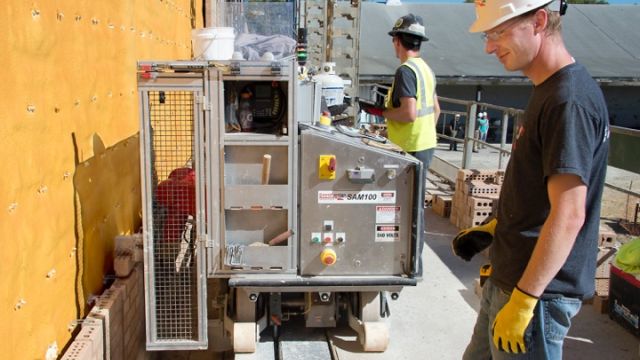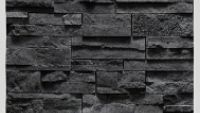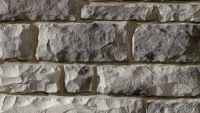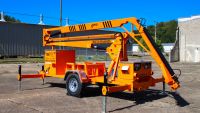Brick by brick, robot lays foundation for a new future in masonry
Robotic masonry
By Paige Jones
A brick-laying robot made its Frederick debut, working alongside masons to complete an 18-foot-high, 80-foot-wide brick wall in just 24 hours.
The robot, aptly named SAM100 for Semi-Automated Masonry, began laying bricks a little after 7 a.m. Tuesday on a wall of a building that will become a Potomac Valley Brick and Supply Co. warehouse at 5219 Urbana Pike, according to Alan Richardson, president of the Rockville-based masonry company.
As three crews of masons from three different companies worked staggered shifts, SAM100 continued operating through the heat and well into the night, finally coming to a stop early Wednesday.
Before this project, the brick-laying robot from Construction Robotics, a New York-based company, had not been used continuously for 24 hours despite having the capabilities, according to Richardson.
Dave Richardson, who oversees installation and fabrication at Potomac Valley Brick, said part of SAM’s role at the Frederick building was to “prove a point that [the robot] can run all night long.”
SAM100 completed the wall in 22 hours, 48 minutes, steadily installing over 4,000 utility bricks while also incorporating Potomac Valley Brick’s logo into the wall with lighter-colored bricks.
“It took a lot of coordination to make this happen ... but I’m happy [with how] the whole thing worked out,” Alan Richardson said.
The idea to have SAM100 work on a piece of Potomac Valley Brick’s future warehouse, which is slated to open in early November, came about after Alan Richardson and Scott Peters, the co-founder and technical lead of Construction Robots, met for lunch a few weeks ago.
After their conversation, Alan Richardson said he then heard from Construction Robotics that SAM100 had a small window of availability this week, and gladly accepted the offer.
“I had people tell me I’m crazy,” Alan Richardson said with a smile. “But I’ve been in the business for 42 years, and I’ve seen a lot of changes.”
The intention of the brick-laying robot is not to replace human masons, but rather to help them with the work. SAM100 plasters a brick with mortar before placing it precisely in the correct spot, but the machine still requires a human hand to keep it running as well as remove any excess mortar on the wall.
“It’s new technology that is going to take some time for [older masons] to understand and to accept how it can help our industry,” Alan Richardson said.
Technological advancements such as SAM100, however, will also attract younger masons to the trade, which has been declining as older masons retire and not enough new ones come to replace them, Alan Richardson said.
In 2013, there were an estimated 1.2 million members of the Masonic Service Association of North America, the lowest number since 1924, when there were an estimated 3 million members, according to the association’s website.
“It will help brick become more of a wall share,” Dave Richardson said, explaining that SAM100 will “increase our percentage of brick buildings.”
With SAM’s involvement in the Potomac Valley Brick warehouse now complete, Alan Richardson said he anticipated the leaders involved in the project will discuss the pros and cons of the robot.
“It needs to be a little faster,” Alan Richardson said of SAM100. “They’re working on visual technology to help SAM visualize the brick, but it still needs a human eye. ... There’s still a long way to go.”
Zak Podkaminer, operations manager at Construction Robotics, said the tech company is constantly updating the software and improving its two brick-laying robots.
“Everyone is very open, and all have provided feedback,” Podkaminer said, adding that this helps Construction Robotics make SAM100 even better.
The robot will now move on to another construction project in Buffalo, New York.
About the Author
Paige Jones covers economy and business in Frederick County. She started at the paper in 2014 as a nighttime crime reporter before switching to business. A Kansas transplant in Maryland, she enjoys exploring Frederick in her free time.
This article was originally published in The Frederick News-Post. This content has been republished with the permission of the publisher.



















